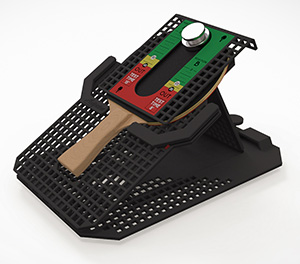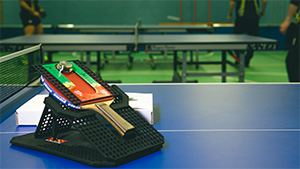SINTHESI USES HP MULTI JET FUSION TO CREATE NEW TABLE TENNIS ACCESSORIES

Customer at a glance
 Since 1992, Sinthesi Engineering has grown to become one of Italy’s top design and engineering services with customers from various industries including automotive, sports equipment, and fashion.
Since 1992, Sinthesi Engineering has grown to become one of Italy’s top design and engineering services with customers from various industries including automotive, sports equipment, and fashion.

Challenge
As an avid table tennis player, Sinthesi Engineering Founder and CEO Giordano Covini wanted to invent three new products to help him and other players improve their game.
The three products are as follows:
-
A double net is a second net placed above the original net on the table. Used as a training tool, the net helps players improve precision by attempting to pass the ball between the two nets during practice.
- A ping phone holds a player’s Smartphone in place while they play, allowing them to capture video of themselves while they train and refer to these videos to help them improve their techniques.
